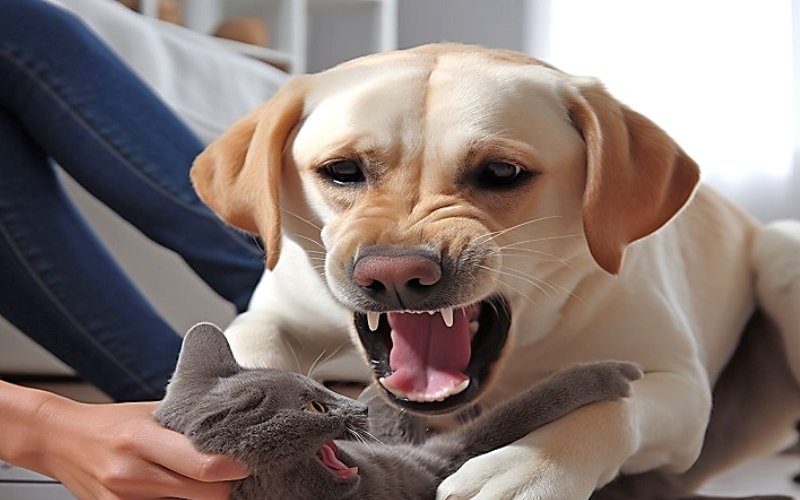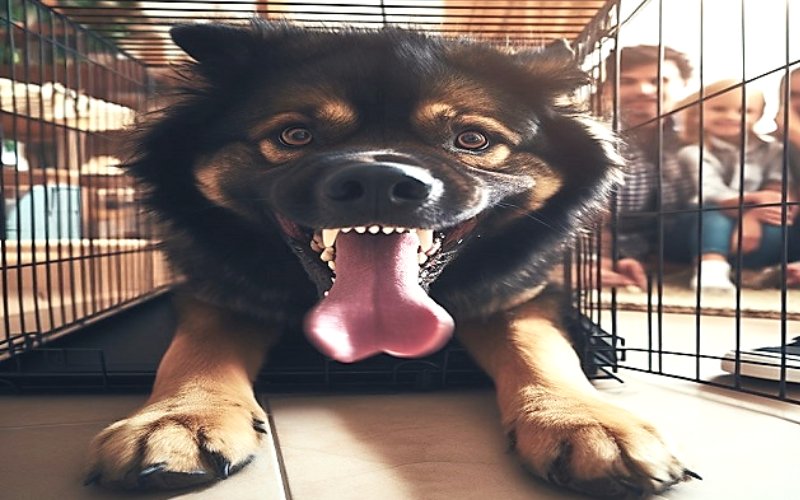Introduction
Dog aggression is any behavior a dog exhibits to cause hurt or injury. Do you have a bone to pick with your aggressive dog? This article will provide you with a comprehensive overview of dog aggression.
You will understand the causes, signs, and how to manage dog aggression. Also, you will learn how to approach growly behavior and stay safe with an aggressive dog.
Causes Of Dog Aggression
Your dog may be aggressive because of:
- Lack of socialization: If your dog lacks social exposure it is more likely to be fearful and aggressive. Socialization should include different people, places, and situations.
- Fear: If your dog feels afraid or threatened, it may become aggressive as a way to protect itself.
- Possessiveness: If your dog feels that its food, toys, or people are being threatened. Dogs tend to guard their ‘stuff’ jealously.
- Pain or illness: If your dog is in pain or sick, it may become more irritable and aggressive.
Also, researcher Joaquín Pérez-Guisado has identified several factors that can contribute to behavioral problems in dogs, including:
- Lack of obedience training
- Being a new dog owner
- Failing to correct bad behavior
- Spoiling or pampering the dog
- Buying a dog as a gift, on impulse, or for guarding
- Not socializing the dog enough
It is important to know that some dogs may still be aggressive even if they have been well-socialized. Such aggression stems from medical conditions such as cognitive dysfunction or thyroid problems. Medical causes should be ruled out before working on behavior modification.
Signs Of Dog Aggression
- Growling, Snapping, and Biting: These behaviors are signs of aggression. Growling is often a warning sign before a nip or bite.
- Raised Hackles: Raised hackles is when the fur along a dog’s back stands up. This signals that your dog is feeling threatened and defensive.
- Hard Stare: A tense, unwavering stare is a dominant signal from your four-legged friend. It can mean trouble is brewing.
- Dominant Posturing: This is when your pup stands tall and rigid with its tail and head held high. This can lead to aggressive behaviors. Dominance-related aggression is often a result of inconsistent or inappropriate human leadership. Dogs need clear and fair rules to follow.
More signs of dog aggression include lip licking, yawning, and avoidance. Others are whale eye (showing the whites of the eyes), tucking the tail between the legs, and urinating out of fear.
Types Of Dog Aggression
Seek professional help from a qualified trainer or behaviorist for concerns of aggression. They can help you identify the cause of your dog’s aggression. They can also develop a personalized plan for managing it.
- Fear-based aggression: This is triggered by fear or anxiety. Fear-based aggression may cause your dog to growl, snap, or bite when it feels threatened.
- Dominance-related aggression: This is caused by a dog’s need to assert its dominance. Your dog may growl, snap, or bite when it feels challenged or needs to assert its dominance.
- Resource guarding: Your dog may display resource guarding to protect its possessions. It may growl, snap, or bite when someone approaches it while it is eating or playing with a toy.
Generally, you can manage your dog’s aggression with some of these tips:
You should expose your dog to a variety of people, places, and situations from a young age. This will help it learn to feel comfortable and not aggressive or fearful around new things. Try avoiding what triggers your dog’s aggression. For example, if your dog becomes aggressive around other dogs, you may want to avoid taking it to the dog park.
You should also use a combination of positive reinforcement and other training methods. They will help you teach your dog new behaviors and modify existing ones. When your dog behaves calmly around triggers, reward it with praise, treats, or toys. It takes time and patience to modify aggressive behavior. So, be consistent with your training and management. Do not get discouraged if the results do not impress you immediately.
Approaching Growly Behavior
- Do not punish: Punishing your dog for aggression can make it worse by causing more fear and mistrust. Instead, correct it!
- Slow desensitization: Gradually expose your dog to triggers in a controlled environment. Ensure you reward calm responses. This will boost your dog’s confidence level.
- Exercise: Engage your dog in a lot of physical activities and mental stimulation. Tiredness reduces aggressive tendencies.
- Use crates and gates: Use crates or baby gates to keep your dog apart from guests. Do this when you cannot be there to supervise your dog yourself. This prevents trouble.
How To Stay Safe With An Aggressive Dog
If you have an aggressive dog, it is important to take steps to keep yourself and others safe. Here are some tips:
- Supervise your dog around guests and other animals.
- Keep your dog on a leash when in public places.
- Use a muzzle if necessary.
- Have a corrective plan ready for when your dog becomes aggressive.
Be vigilant always and be ready for any situation. Also, have a plan for what to do if your dog becomes aggressive. This may involve having a safe place to go or having a way to separate yourself from your dog.
Additional Tips:
- Observe your dog’s body language.
- Be careful when handling your dog’s belongings.
- Do not approach an aggressive dog.
- Seek professional help if needed.
Conclusion
Dog aggression is a very serious problem. However, it is important to remember that it is never too late to correct it. If you notice aggressive behaviors in your dog, please seek professional help quickly. At Off Leash K9 Training, we have a qualified trainer for your dog’s aggression.
615-905-6559
[email protected]
Olk9tn.dog



